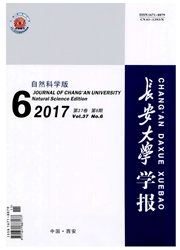

 中文摘要:
中文摘要:
为增强机动式辅助客运系统(MAST)的实用性,以在尽量保持其运营特性的基础上提高系统的服务能力,基于对MAST乘客的时间效用分析,提出了在机动化服务区域内,除控制站点外进一步设置对应主要需求源点的集散点的服务改进模式,并针对有无设置集散点的情况分别建立了基于不同起讫点服务模式的乘客总体时间效用的函数评价模型,最后利用仿真算例结合定性与定量分析验证了改进模式的有效性。研究结果表明:在矩形区域中设置集散点能有效提高MAST的系统效用;"集散点起-全区域讫"的服务模式在常态需求发生概率下对于矩形服务区域具有最大的总体效用,具有高度可行性与适用性;该模式虽然在某种程度上降低了乘客乘车便利性,但会节约大量无效的绕行与停车时间,也能避免需求点详细定位以及某些需求点不适宜停留的问题,同时仍可保持乘客目的地的分散性,以保留其直达优势性。
 英文摘要:
英文摘要:
To improve the practicability of mobility allowance shuttle transit and its systematical service capacity on the basis of trying to keep the characteristics of its operation mode, based on time utility analysis of MAST passenger, a model to improve service of aggregation points was proposed by further setting corresponding main demand of mechanization service area checkpoints except in control point. Evaluation models of passengers' time utility based on aggregation points was set. Finally, the validity of the improved model was verified by simulation example combining quantitative and qualitative method. The results show that setting up aggregation points in rectangle zones can improve efficiency systematic utility of MAST. The "limitative origins & region-wide destination" service mode has the biggest overall utility in rectangle service area under normal possibility of demand occurrence, showing high feasibility and applicability. Although the mode lowers the convenience of transport for passengers to some extent, it cuts down time for making much invalid spot stop and detour and avoids problems of detail location of demand spots and inadequate stop in some demand sport, meanwhile maintaining the disperstiveness of passengers' destinations to retain its advantage of arriving directly. 2 tabs, 2 figs, 20 refs.
 同期刊论文项目
同期刊论文项目
 同项目期刊论文
同项目期刊论文
 期刊信息
期刊信息
